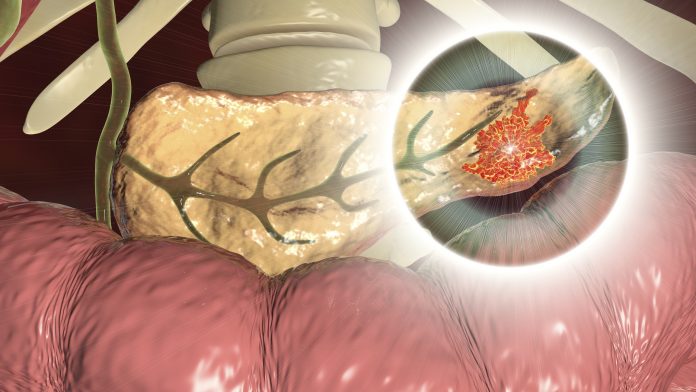
The protein GREM1 Is a key regulator of cellular heterogeneity in mouse and human pancreatic cancer, according to recent work from The Institute of Cancer Research (ICR), London. According to this work manipulating GREM1 levels can fuel or reverse the ability of pancreatic cancer cells to change into a more aggressive subtype.
These findings were published recently in Nature. The researchers, who work in the Breast Cancer Now Toby Robins Research Centre at the ICR, believe this work could pave the way for new pancreatic cancer treatments.
They studied pancreatic ductal adenocarcinoma (PDAC), the most common and aggressive form of the disease, with the GREM1 gene switched off both in mice and in pancreatic organoids. Switching off GREM1 caused the tumor cells to rapidly change shape and develop added properties to invade new tissues and migrate. Within just 10 days, all the tumor cells changed their identity into a dangerous, invasive cell type that was also more likely to spread.
Around 90% of mice without functioning GREM1 developed tumors that had spread to their liver, compared to 15 per cent of mice where GREM1 was working normally. The scientists then showed that boosting GREM1 levels could reverse this process and cause invasive cell types to revert into a less dangerous form.
Earlier studies on GREM1 in other cancer types suggested it had a role in the cellular transition process. “Our study for the first time demonstrates GREM1 is an intrinsic regulator of epithelial and mesenchymal cancer cell fates in a paracrine manner,” said lead author Linxiang Lan, staff scientist at the ICR.
Professor Axel Behrens, senior author of the study, said, “This is an important and fundamental discovery that opens up a new avenue for uncovering treatments for pancreatic cancer. We have shown that it is possible to reverse cell fate in pancreatic cancer in the lab—turning back the clock on aggressive tumors and switching them to a state that makes them easier to treat.” Behrens is Leader of the ICR’s Cancer Stem Cell Team.
The researchers stress, however, that the science is early stage, and significant amounts of research would be required to discover and develop treatments that change PDAC cell fates and make the tumor respond better to therapies.
Pancreatic cancer has the lowest survival rates of common cancers. Less than seven per cent of people will survive for five years or longer. More than 10,000 people are diagnosed with pancreatic cancer in the UK alone each year, and more than 9,000 will die from it. The genetics of this disease are just beginning to be uncovered, with multiple targets implicated, including BRCA mutations, parathyroid hormone-related protein, KRAS, TP53, CDKN2A, and SMAD4.
The IRC team also discovered that another protein, called BMP2, is involved in regulating GREM1, and that these two proteins regulate the form PDAC cells ultimately take, according to a mathematical model first proposed by Alan Turing in 1952. These ‘Turing patterns’ are found in nature – from the patterns on the skin of the giant puffer fish to seashells – and strikingly the same sort of patterns are seen in the different types of cells found in pancreatic cancer. Further studies are needed to determine whether this model is also applicable in other forms of cancer.
Behrens said, “By better understanding what drives the aggressive spread of pancreatic cancer, we hope to now exploit this knowledge and identify ways to make pancreatic cancer less aggressive, and more treatable.”
Further, the study could point to new diagnostics. Said Lan, “As GREM1 is mainly produced by mesenchymal cancer cells in pancreatic cancer, a population that become pronounced only in the mid-late stages of the disease, it might be a biomarker of disease stage.”
Kristian Helin, Chief Executive of The Institute of Cancer Research, London, said, “Pancreatic cancer is one of the most devastating of all cancers – the most common form of the disease spreads aggressively, making it hard-to-treat and a terrifying diagnosis for patients and their loved ones.”
She added that, “This new finding has broadened our understanding of the molecular basis of how pancreatic cancer gains the ability to grow and spread around the body. Although more work is required, this type of fundamental research is essential for developing concepts for new and more effective treatments for cancer.”













